This post was first written on August 5, 2021 by Angie Hilsman and was updated with additional information on June 27, 2023 by Lily LaRegina.
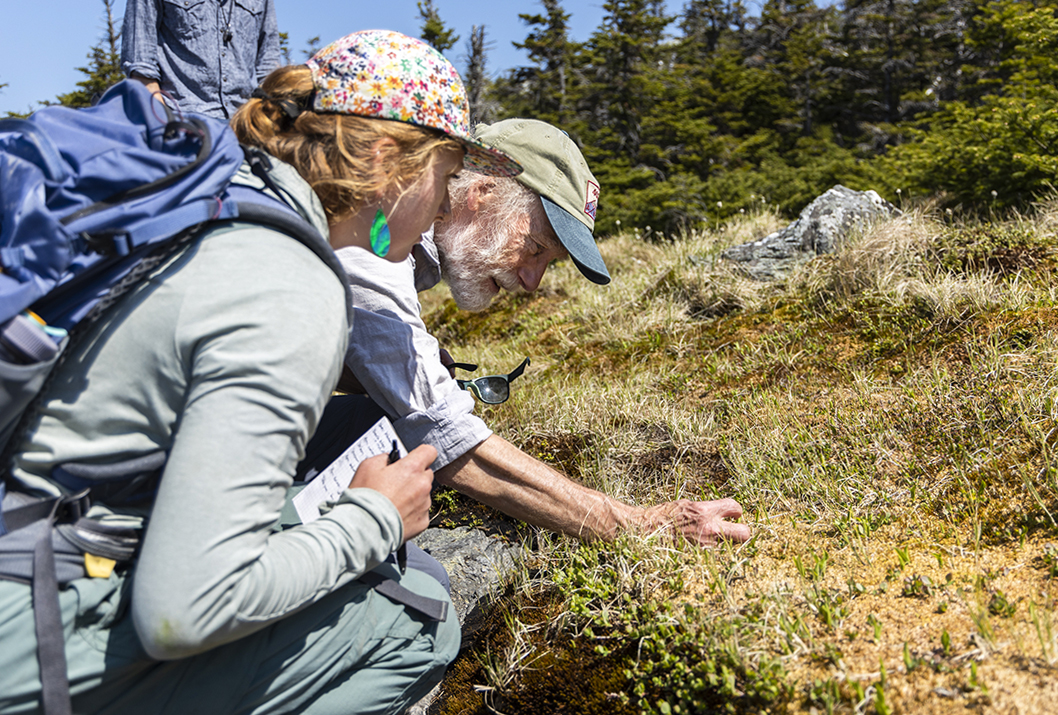
State botanist Bob Popp kneels beside a flat rock, just in front of the Mt. Mansfield Visitor Center. He points out mountain cranberry and bluets to a dozen GMC staff — 11 of whom are recently hired seasonal caretakers.
The mountain cranberry and bluets are alpine plants, rare and fragile species that grow above treeline. These plants can take a long time to grow in such an exposed environment, with wind, cold, and ultraviolet rays deterring growth and other vegetation. But they’re especially important; their roots will hold down soil and otherwise curb erosion at these altitudes.
“There are only 13 square miles of alpine zone across New York, New Hampshire, Vermont, and Maine,” Bob explains to the caretakers. In Vermont, about 125 acres (0.2 square miles) of alpine zone remain; eight alpine species are classified as either endangered (4) or threatened (4) in Vermont, Bob says.
The caretakers need to know this. Throughout the summer, they live and work along the Long Trail system. Caretakers’ workdays include maintaining campsites and trails, but a lot of their work will focus on protecting fauna and flora, like these alpine plants. They’ll do this with hiker education, or one-on-one conversations meant to involve hikers in trail stewardship.
This can make a world of difference for alpine plants. Much of this vegetation is hardly noticeable, mimicking lawn grass and tucked around rocks. The plants are easily trampled by foot traffic or hindered when soil is compacted by hikers and pets. Caretakers will urge hikers to walk on the rocks to protect these precious plants.
Bob and U.S. Fish & Wildlife Ranger Ken Sturm lead the staff across Mansfield’s ridgeline to learn more about alpine plants. While the orientation is a yearly part of caretaker training, it’s not insider knowledge. Here’s what caretakers learned about alpine plants. Brush up on your ID to become an informed hiker and effective trail steward.
View this post on Instagram
Azure Bluets
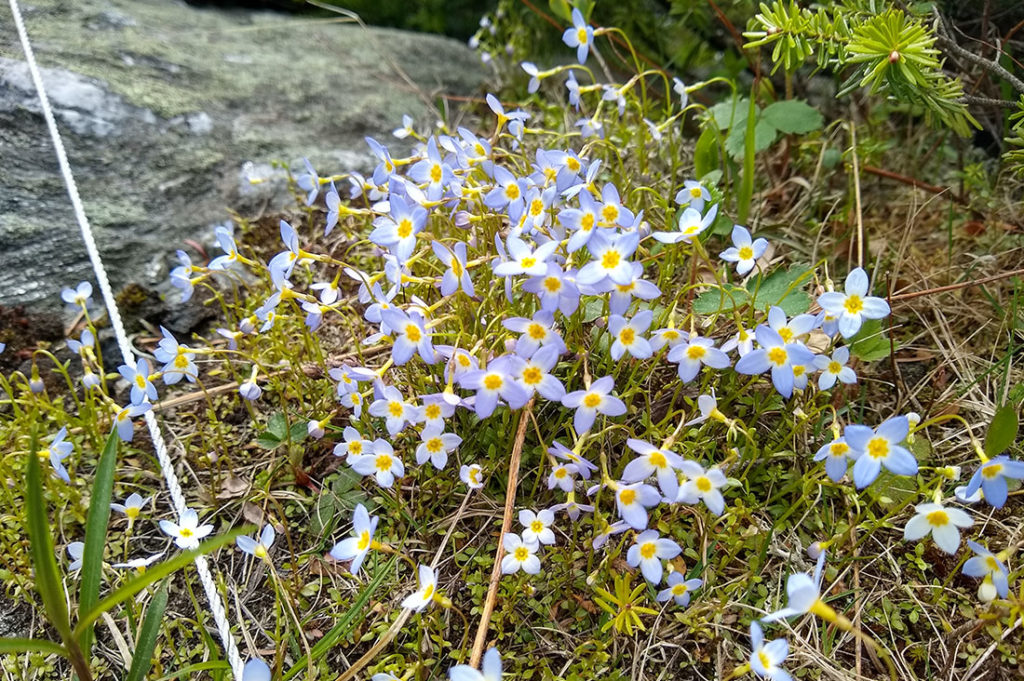
These small blue flowers are plentiful in the alpine. They’re not rare at all, says Bob. In fact, bluets can be found in every New England state; they grow in alpine zones and on any open ledges, meadows, or fields.
Alpine Sandwort
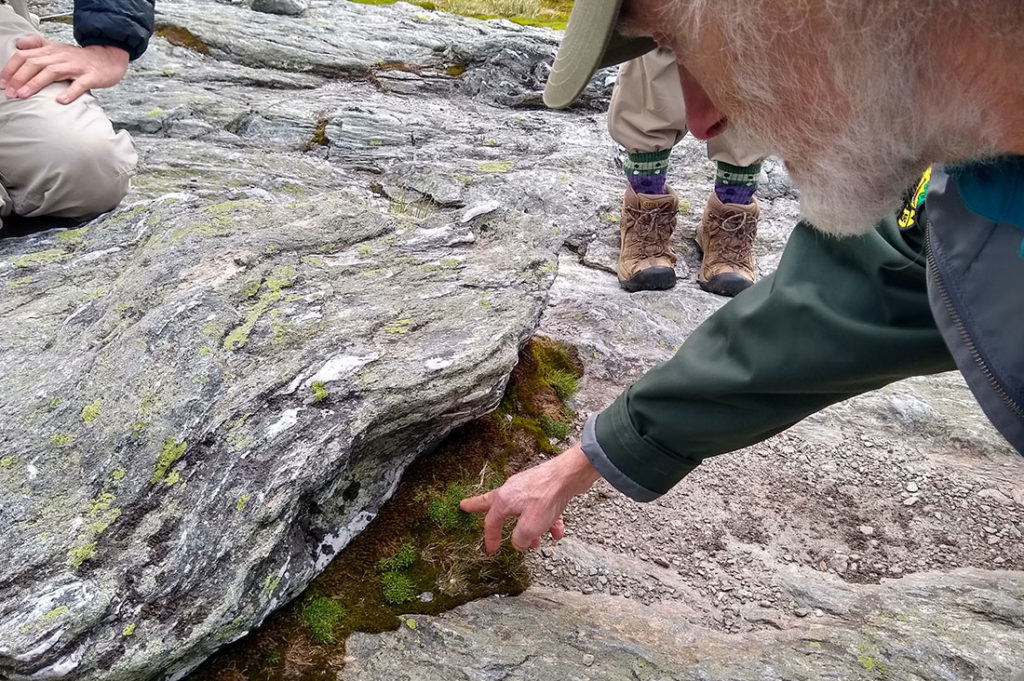
Alpine sandwort is what’s known as a disturbance colonizer. That means that this alpine plant grows where there is a lot of disturbance, such as foot traffic. You can usually find it tucked underneath rocks along the trail.
You’ll find that identifying plants by their common names can be tricky. This is because such labels can vary by region. The alpine sandwort also goes by the names mountain sandplant and Greenland stitchwort. Scientific names — which include the genus and species — are more accurate because they are used universally. The scientific name for alpine sandwort is Minuartia groenlandica.
Bearberry Willow (Endangered)
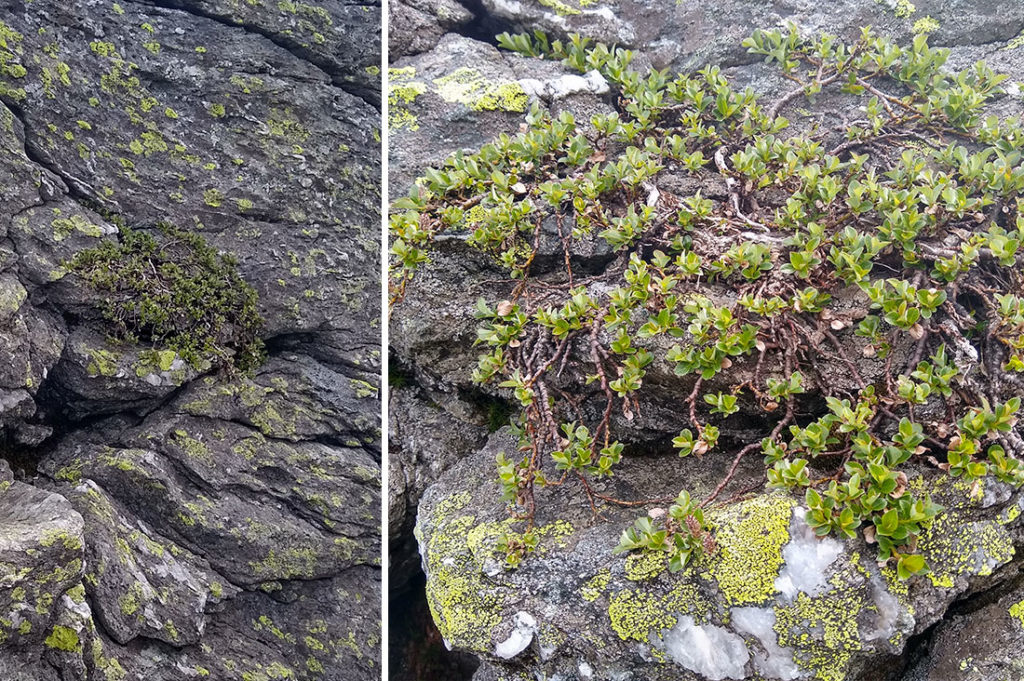
Bearberry willow is an endangered species in Vermont, although it is more commonly found in Maine and Canada. This particular bearberry willow plant (pictured) is more than 100 years old, Bob says. “It appears in photos from the early 1900s.”
Bigelow’s Sedge
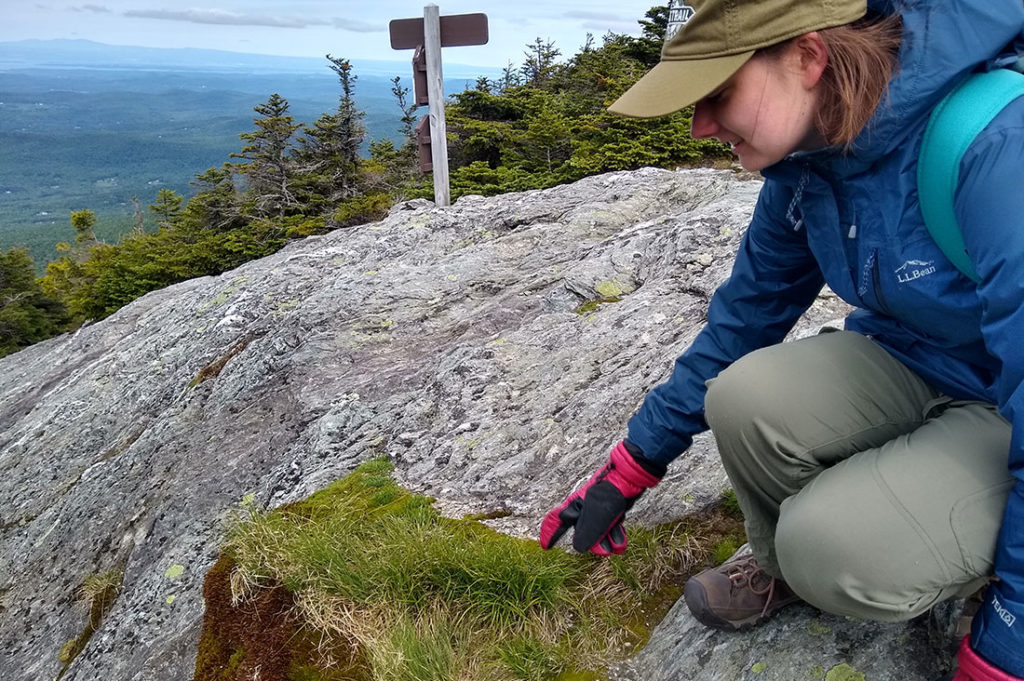
Bigelow’s sedge is pretty common around the alpine zone. These plants spread by underground stems to form meadows. It also looks a lot like grass. Due to the similarity, this sedge is often unappreciated by trail users; hikers are one if its biggest threats.
Black Crowberry (Rare)
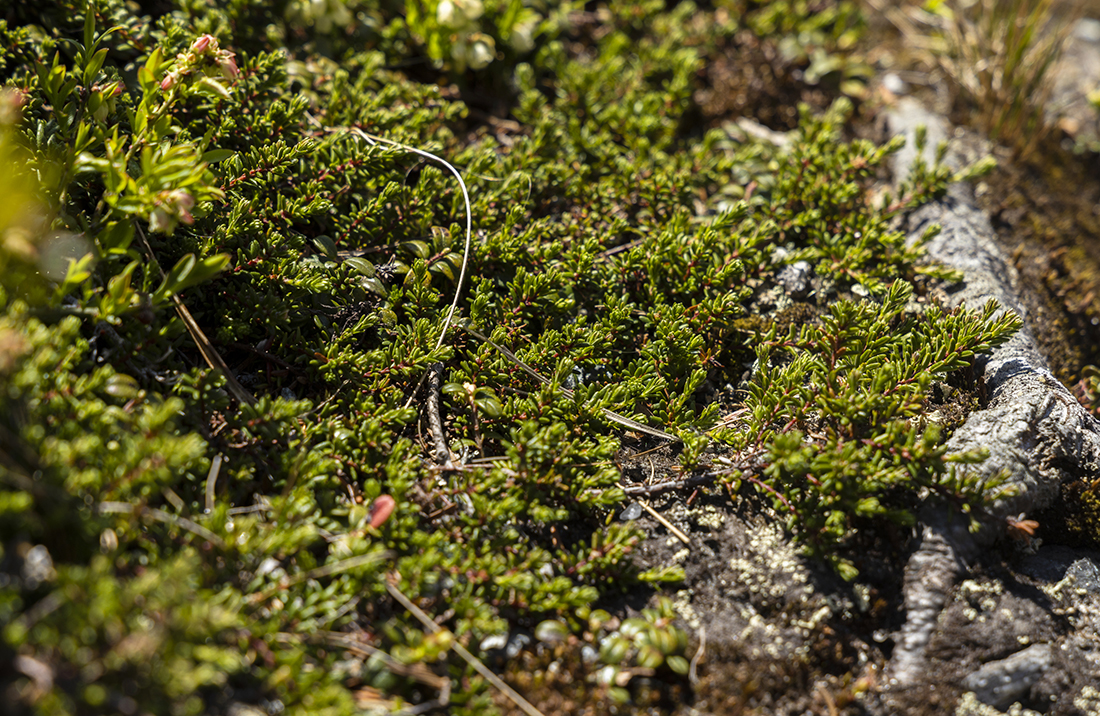
Black crowberry gets its name from the dark berries it grows. While the fruits are edible — and enjoyed by dozens of bird species and black bears — they’re not super flavorful. This alpine plant is rare in Vermont, but is not on the threatened species list.
Blueberries
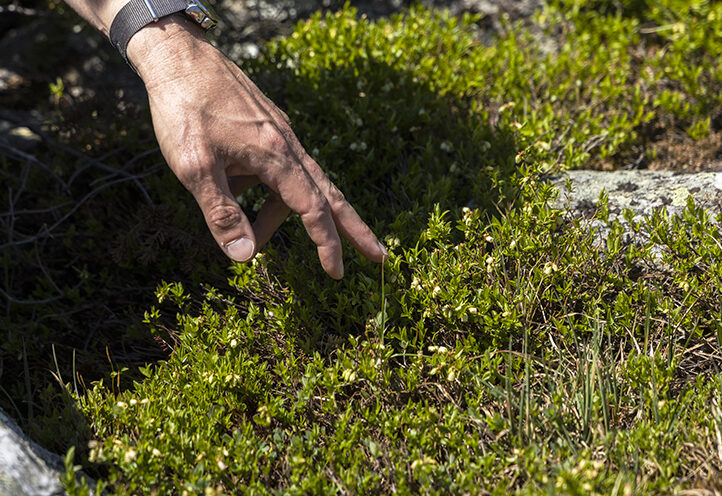
You may recognize some of your favorite summer fruits up in the alpine, but don’t go picking them all, says Bob. Try a bite, but leave the alpine blueberries, which will ripen by late summer, for all visitors.
Conifers
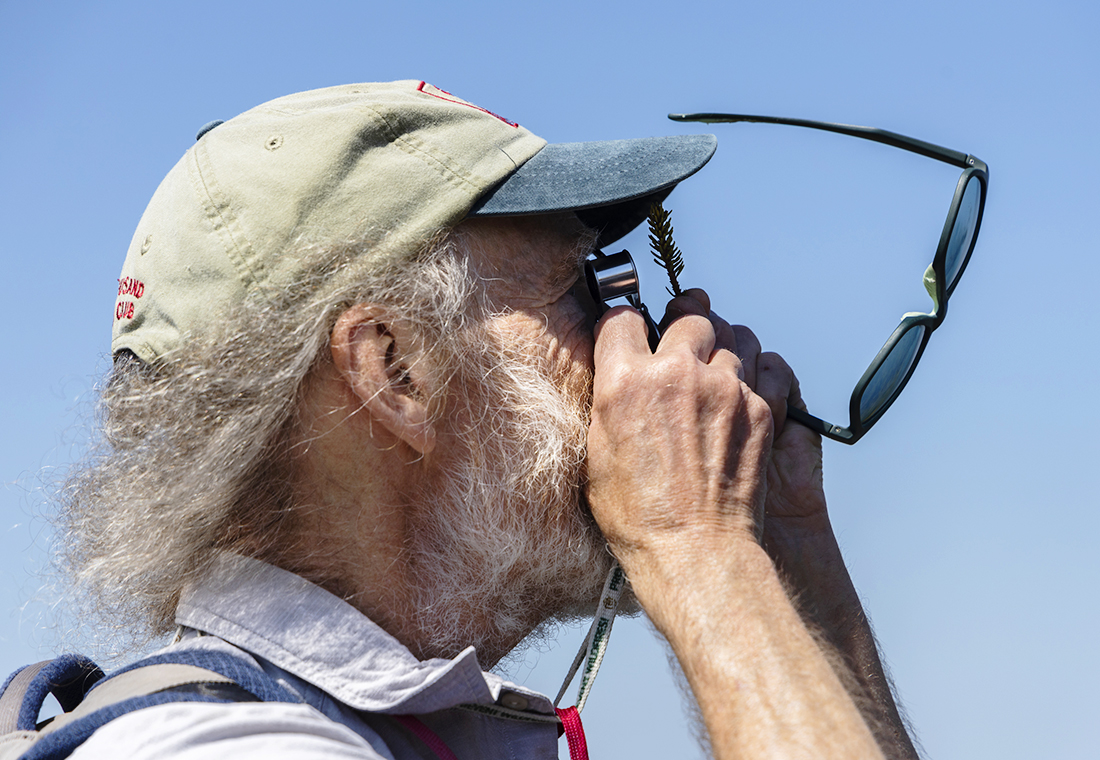
There are a few conifer species, or evergreens, that grow in the alpine zone. However, you’ll notice they don’t get as tall as they do below treeline. You may even notice that trees are stunted the higher up the mountain you climb. That’s because they too are fighting against wind exposure, and it takes a lot more energy to grow. Some trees you’ll find in the alpine include:
You may first notice the balsam fir by its scent, but another telltale is the way its flat needles grow straight out of the branch instead of growing out in clusters (like pine needles do). If you were to hold the branch horizontally in front of you, you’d also notice that the branch is flat; needles grow only on the sides of the branch, not all around it.
Spruce generally have sharp needles, but you’ll also notice that needles grow on every side of a black spruce branch (unlike on the balsam fir). Differentiating it from a red spruce can be tricky at these summits; under a hand lens, you may notice small, gland-tipped hairs that are indicative of the black spruce. The needles are also shorter and are a whitish-green color compared to the longer, more yellow-green needles of the red spruce, says Bob.
Diapensia (Endangered)
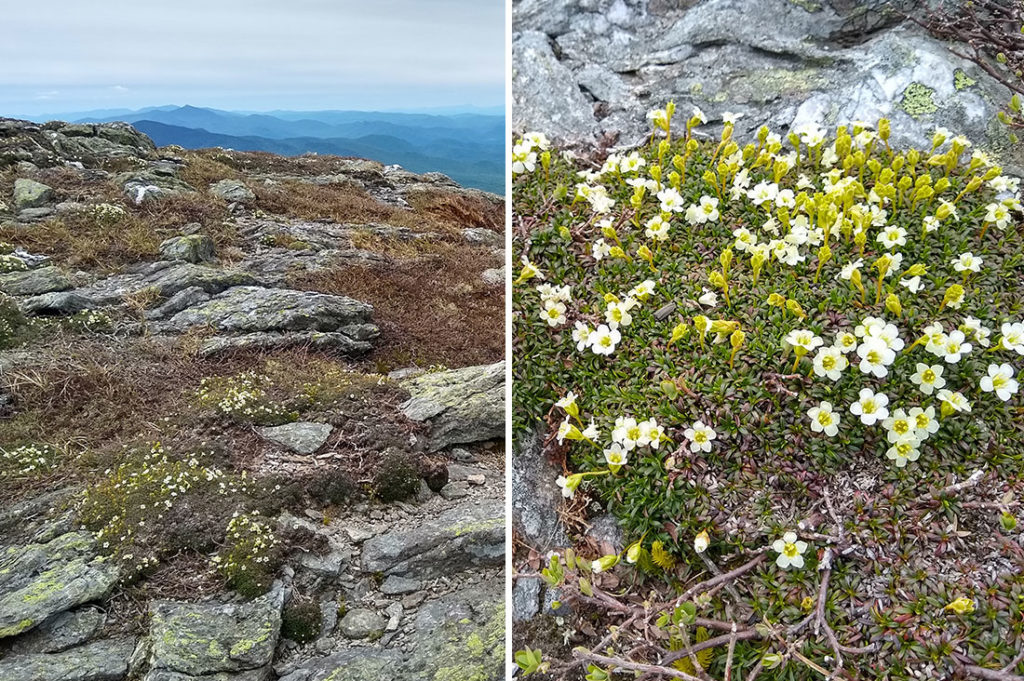
Diapensia is another endangered Vermont plant. It’s leathery leaves help it to prevent water loss, an adaptation to living at high altitudes. It also is a classic example of a “cushion” growth form, in which the plant grows in small, low clusters for protection from the wind and cold.
Labrador Tea
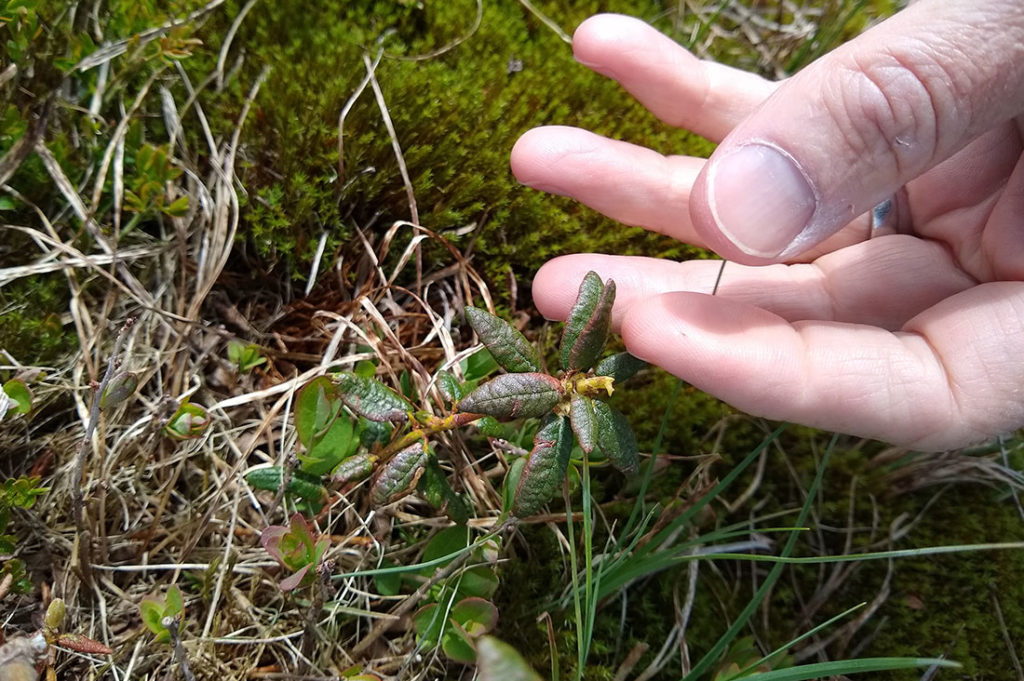
While Labrador tea grows in the alpine zone, it also prefers bogs. Few plants can thrive in the acidic bogs, which means the Labrador tea has less competition for more space and other resources. If you flip its leaves, you’ll find hairs; this adaptation helps the Labrador plant lock in moisture.
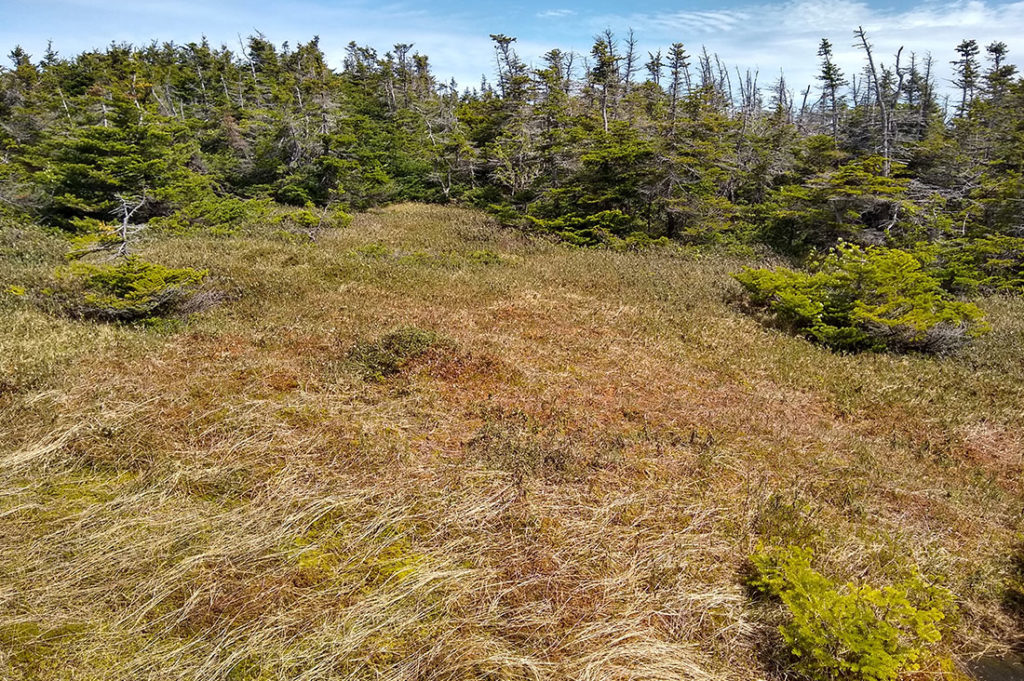
Fun fact: there are bogs located in the alpine zone, but do you know what makes a bog? The answer, says Bob, is that the only source of water feeding a bog is rain. There are no streams or underground springs to bring in nutrients. Nearby mosses release hydrogen ions into the water, which is why this bog is so acidic.
Leatherleaf
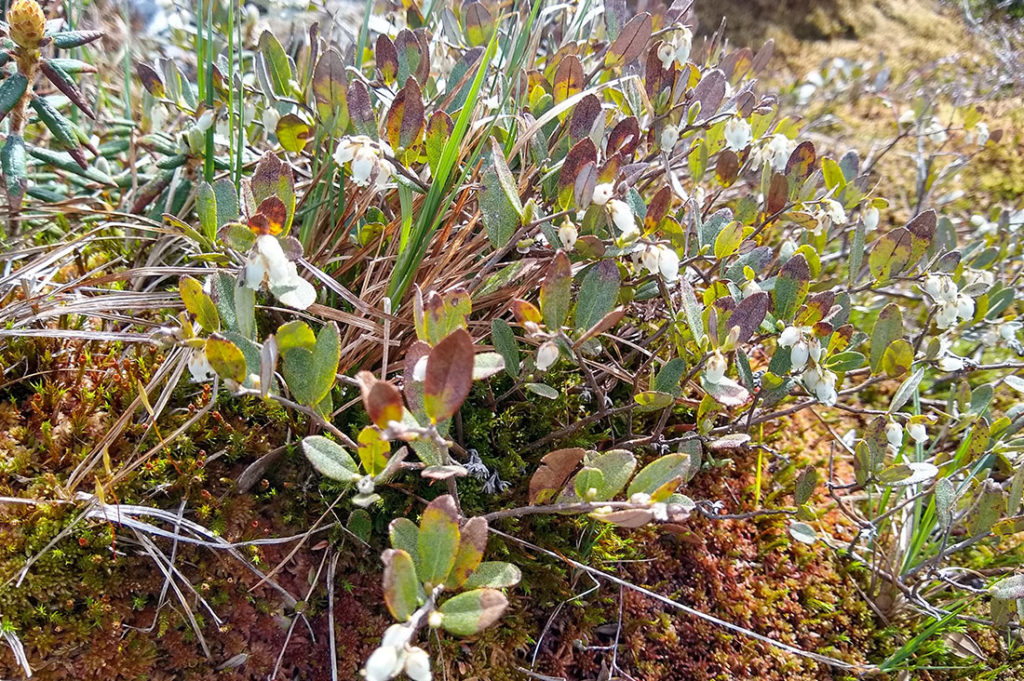
Leatherleaf most certainly gets its name from its leathery, narrow leaves. This shrub also thrives in bogs, and it can stabilize this wet habitat so that other bog-loving plants thrive as well.
Mountain Cranberry
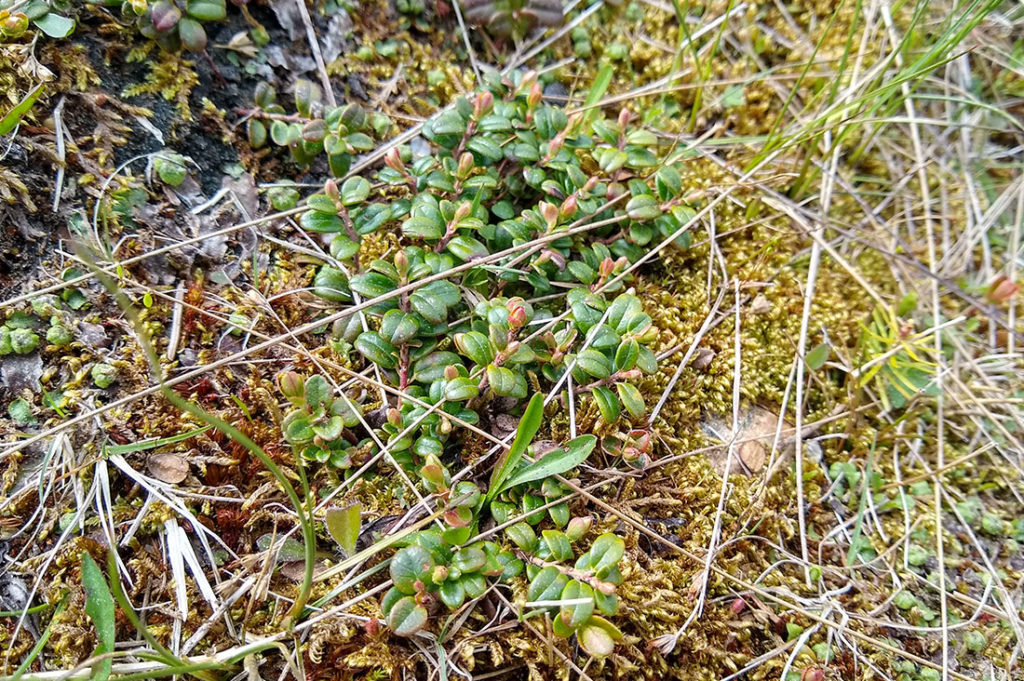
Mountain cranberry are categorized as cushion plants. They grow in cushion formation to lock in moisture and for protection against the elements. Their waxy leaves also help lock in moisture.
Three-Leaved Goldthread
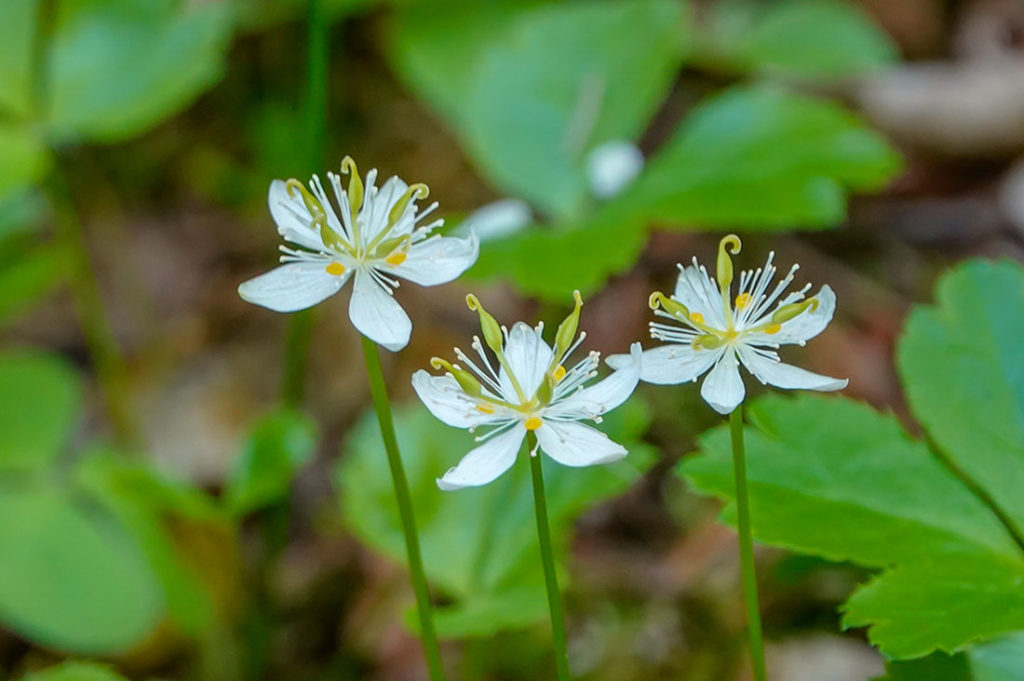
This delicate plant is known for its strong medicinal properties. Its rhizomes, or underground stems, are traditionally used for treating stomach cramps. The goldthread can be found all over New England in many different habitats.
Three-Toothed Cinquefoil
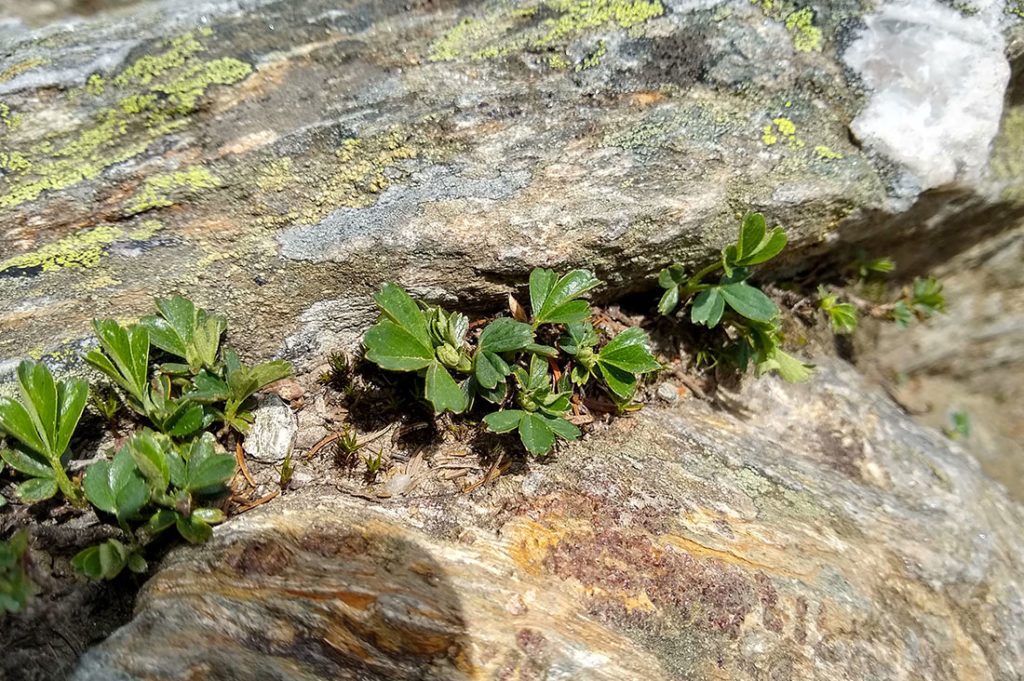
The three-toothed cinquefoil gets its name from its distinctive leaf pattern. Its leaves are also evergreen, which means that when the snow starts to melt, these plants can jumpstart photosynthesis. Photosynthesis is the process in which plants turn sunlight into energy.
Love the plant life? Talk to a GMC caretaker about the plants you see. You can also improve your plant id with apps like Go Botany and iNaturalist.
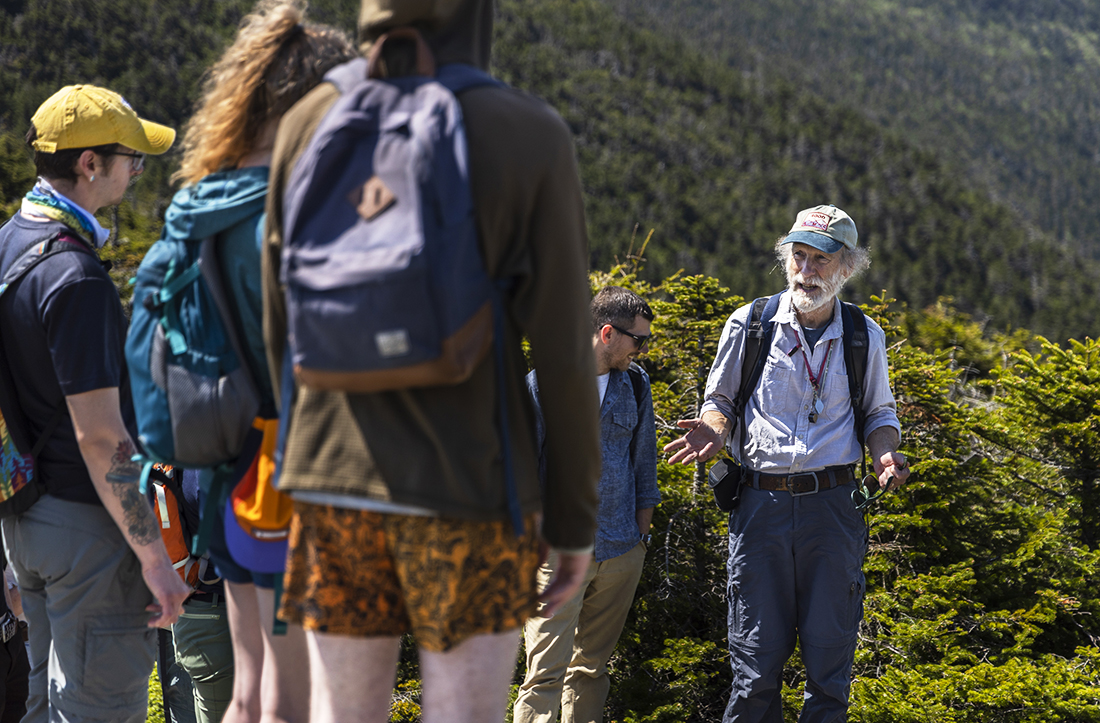
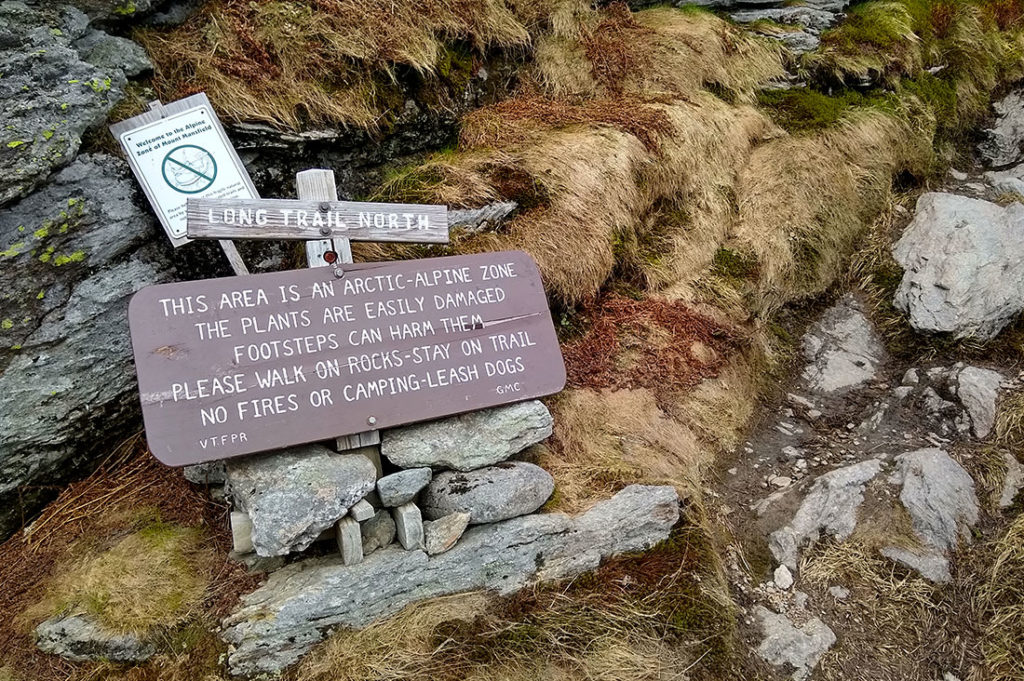
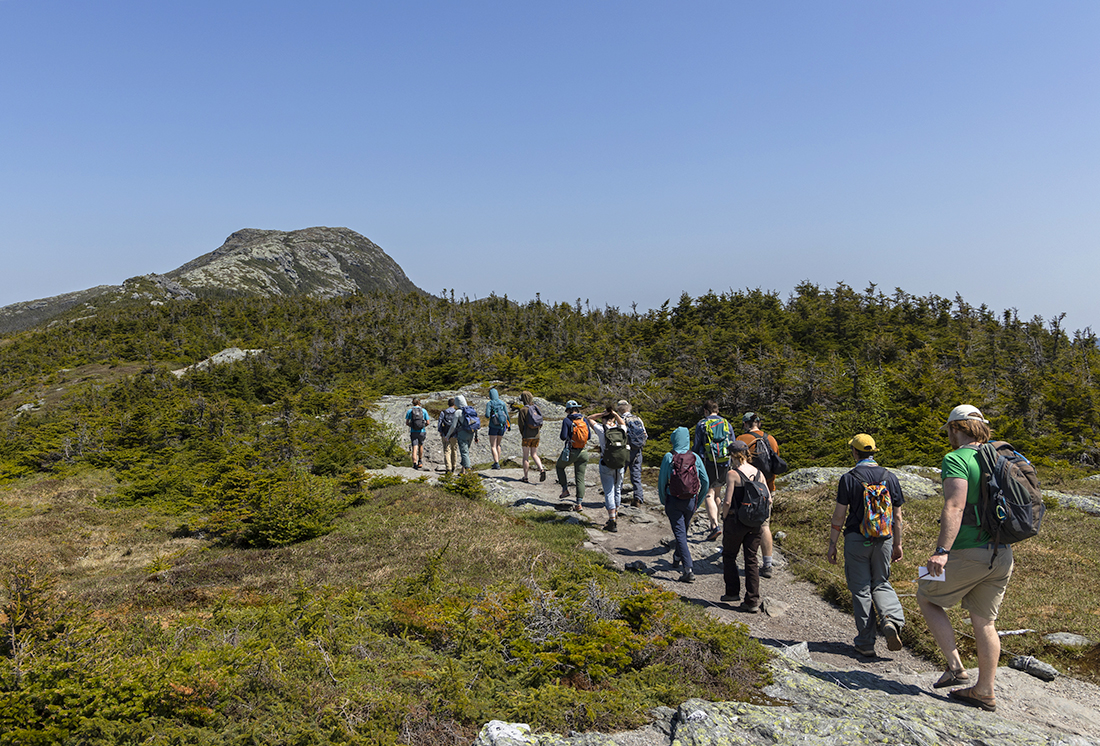
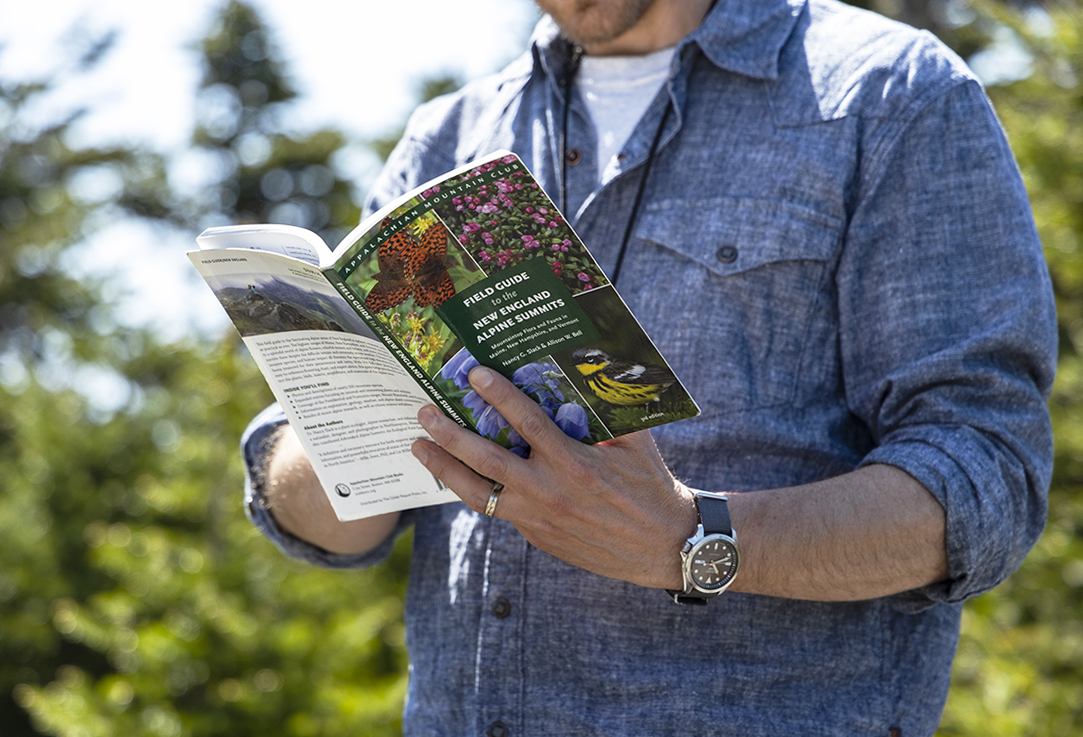
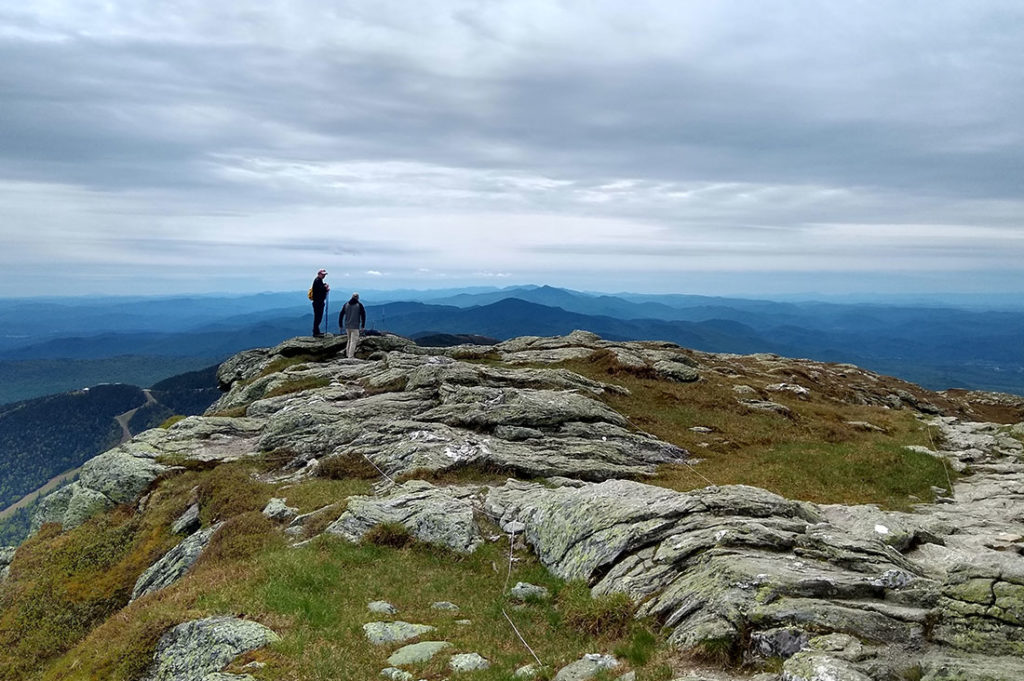
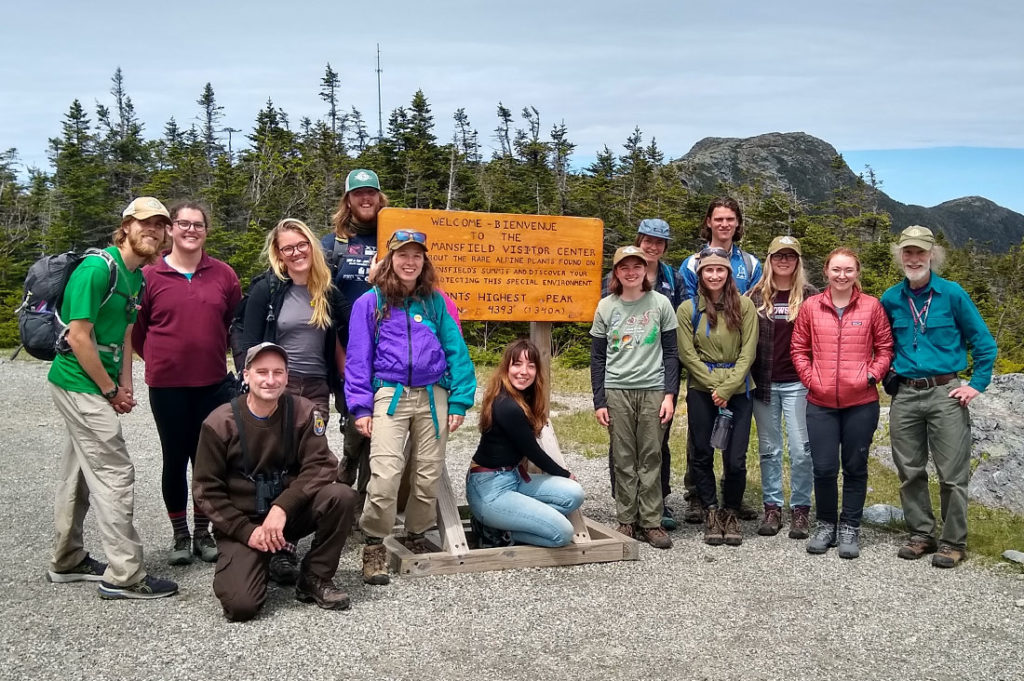
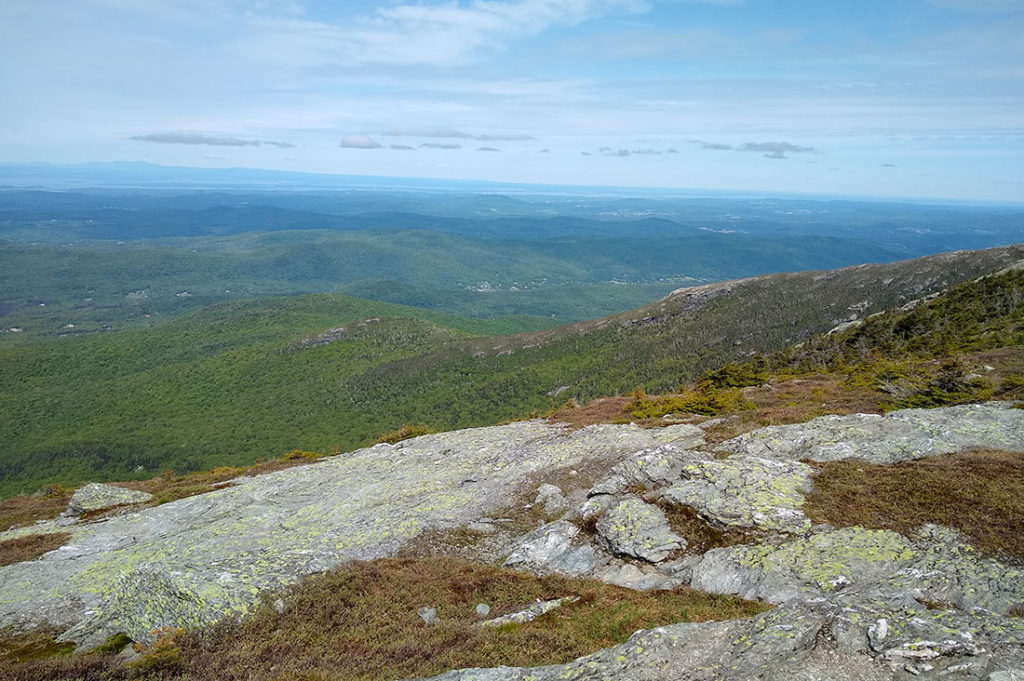



















thanks for the write-up. It is always great to share wooland photos with subjects identified.Looking foreward to more species information in a spot our young entering hikers can access. Good Job! Alive55man